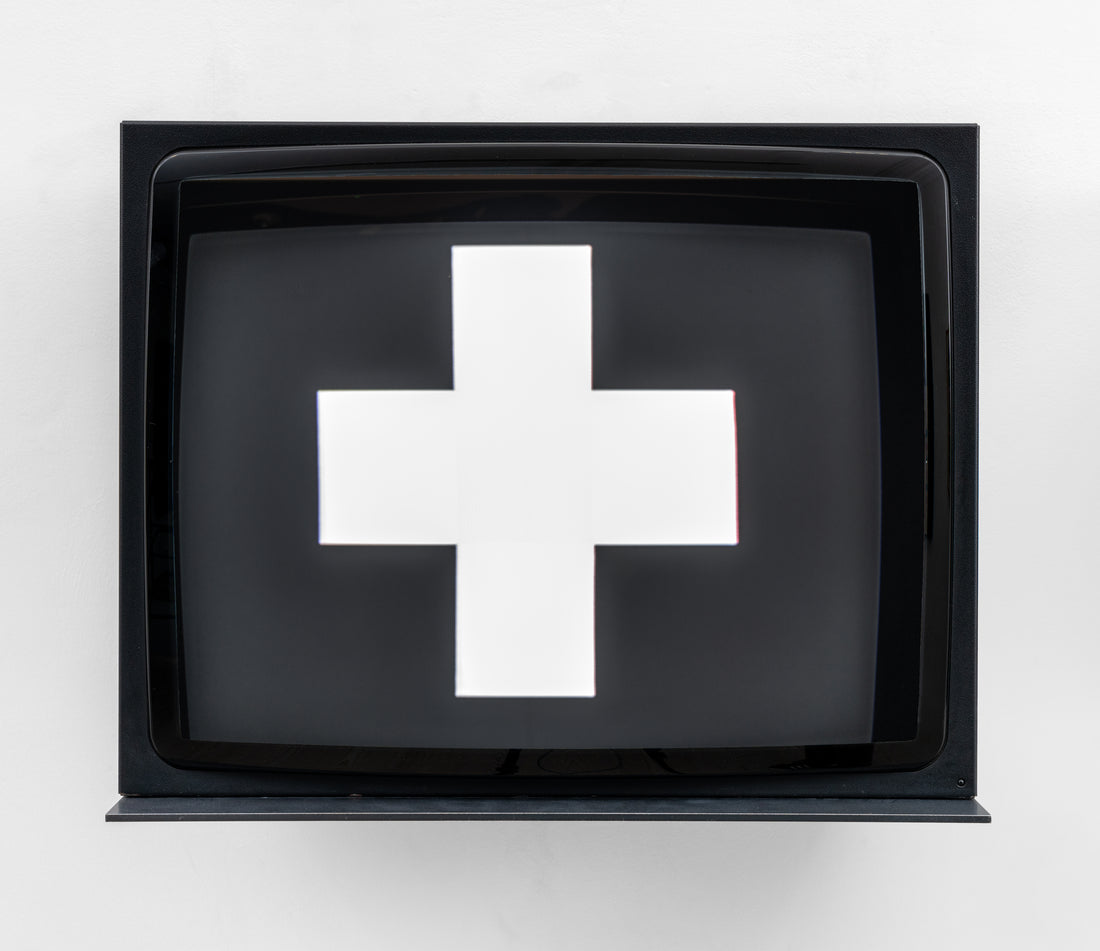-
Efflorescence
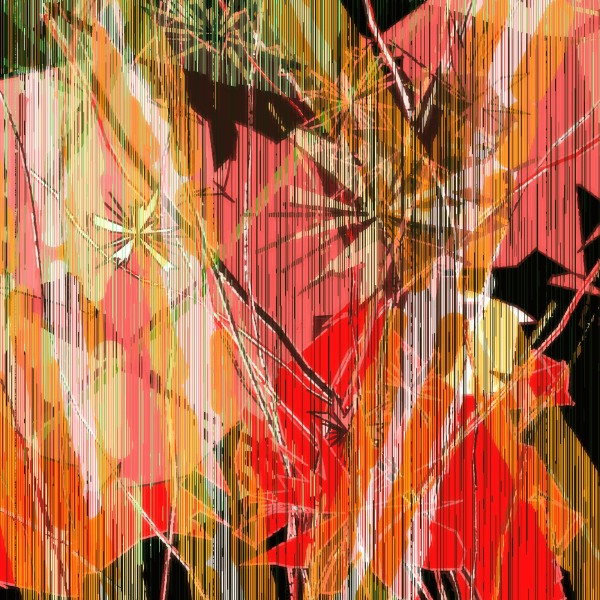 Vendor:EfflorescenceLoren Bednar
Vendor:EfflorescenceLoren Bednar
2023
Digital (WebGL + JavaScript) On-Chain - Live-running code
- Regular price
-
$410.00 - Regular price
-
- Sale price
-
$410.00
-
Cinema Redux: Metropolis
 Vendor:Cinema Redux: MetropolisBrendan Dawes
Vendor:Cinema Redux: MetropolisBrendan Dawes
2023
Aluminium Dibond with Black Polyethylene Core
- Regular price
-
$13,000.00 - Regular price
-
- Sale price
-
$13,000.00
-
You, Me and the Machine
 Vendor:You, Me and the MachineBrendan Dawes
Vendor:You, Me and the MachineBrendan Dawes
2022
Real-time generative work made of acrylic, Video Display, Computer, Ultrasonic Sensor, Custom Software
- Regular price
-
$25,000.00 - Regular price
-
- Sale price
-
$25,000.00
-
A Moment from You, Me and The Machine #1
 Vendor:A Moment from You, Me and The Machine #1Brendan Dawes
Vendor:A Moment from You, Me and The Machine #1Brendan Dawes
2022
Digital Image, ERC-721 token
- Regular price
-
$3,300.00 - Regular price
-
- Sale price
-
$3,300.00
-
A Moment from You, Me and The Machine #2
 Vendor:A Moment from You, Me and The Machine #2Brendan Dawes
Vendor:A Moment from You, Me and The Machine #2Brendan Dawes
2022
Digital Image, ERC-721 token
- Regular price
-
$3,300.00 - Regular price
-
- Sale price
-
$3,300.00
-
A Moment from You, Me and The Machine #3
 Vendor:A Moment from You, Me and The Machine #3Brendan Dawes
Vendor:A Moment from You, Me and The Machine #3Brendan Dawes
2022
Digital Image, ERC-721 token
- Regular price
-
$3,300.00 - Regular price
-
- Sale price
-
$3,300.00
-
Shaping Form
 Vendor:Shaping FormErnest Edmonds
Vendor:Shaping FormErnest Edmonds
2013
Screen, computer, camera
- Regular price
-
$20,000.00 - Regular price
-
- Sale price
-
$20,000.00
-
Even when I want to.
 Vendor:Even when I want to.Licia He
Vendor:Even when I want to.Licia He
2022
Plotter-rendered generative painting made with Python, mixed watermedium on cotton paper with ERC-721 token
- Regular price
-
- Sale price
-
$6,600.00
-
Comfort in Red and Blue
 Vendor:Comfort in Red and BlueTyler Hobbs
Vendor:Comfort in Red and BlueTyler Hobbs
2019
Pen on paper
- Regular price
-
$0.00 - Regular price
-
- Sale price
-
$0.00
-
Algorithmic Self-Portrait
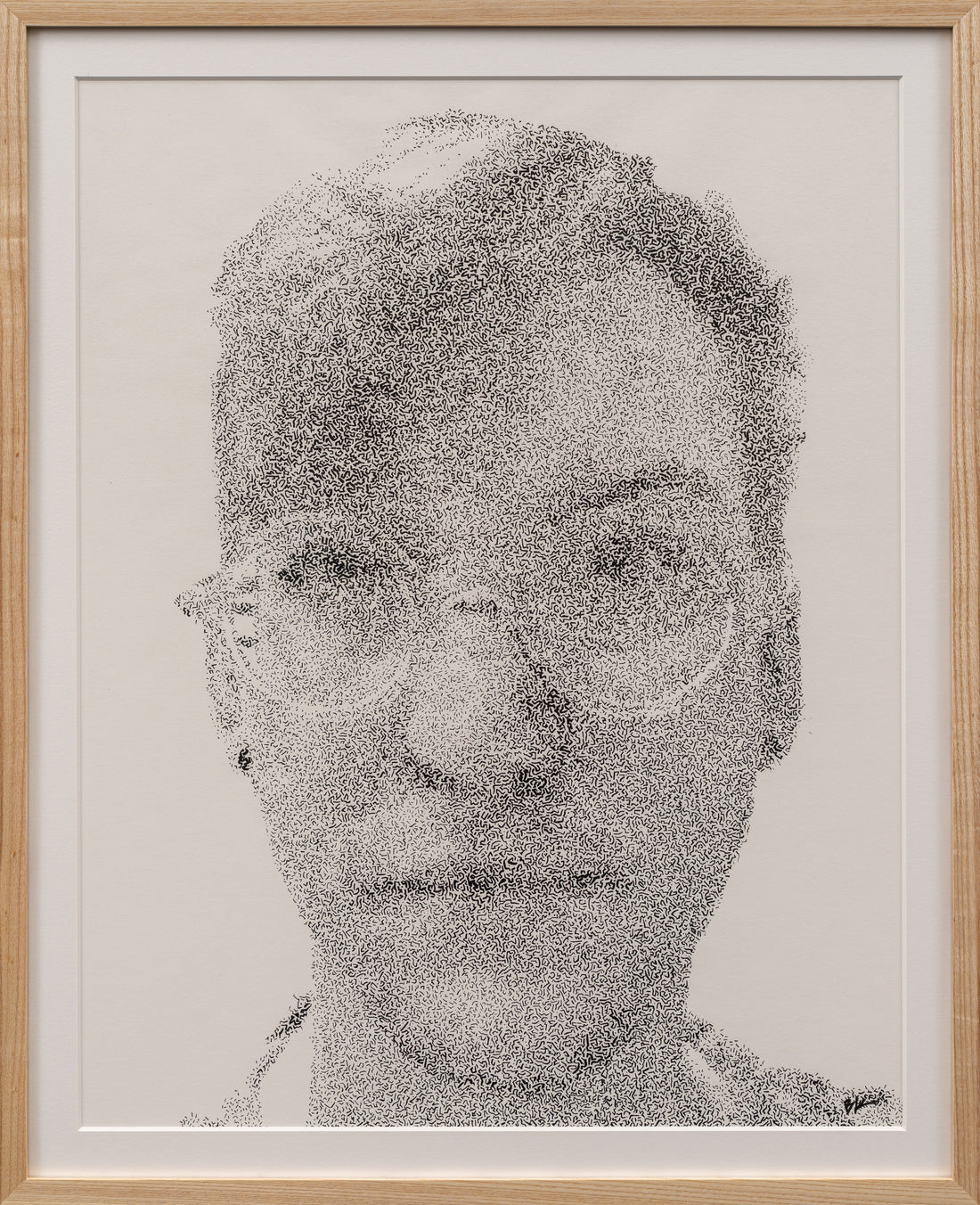 Vendor:Algorithmic Self-PortraitBen Kovach
Vendor:Algorithmic Self-PortraitBen Kovach
2023
Ink on paper made with generative algorithm and ERC-721 token
- Regular price
-
$18,000.00 - Regular price
-
- Sale price
-
$18,000.00
-
Oval Etching
 Vendor:Oval EtchingWilliam Latham
Vendor:Oval EtchingWilliam Latham
1985
Etching on paper
- Regular price
-
$4,510.00 - Regular price
-
- Sale price
-
$4,510.00
-
Mutator1. Zapx6red-13 (also known as The Second Listening Room)
 Vendor:Mutator1. Zapx6red-13 (also known as The Second Listening Room)William Latham
Vendor:Mutator1. Zapx6red-13 (also known as The Second Listening Room)William Latham
1990-2023
Print on high grade paper and original digital file
- Regular price
-
- Sale price
-
$17,000.00
-
Alphabetics (Infected by PostScript Viruses)
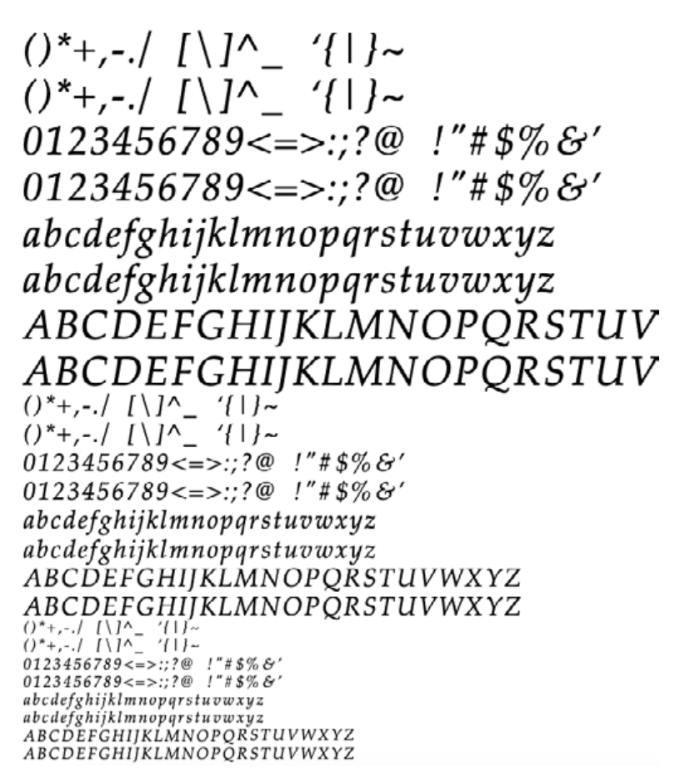 Vendor:Alphabetics (Infected by PostScript Viruses)Rhea Myers
Vendor:Alphabetics (Infected by PostScript Viruses)Rhea Myers
1993 - 2023
Commissionable work using PostScript code
- Regular price
-
$3,000.00 - Regular price
-
- Sale price
-
$3,000.00
-
Surgical Strike
 Vendor:Surgical StrikeRhea Myers
Vendor:Surgical StrikeRhea Myers
1996
Gloss C-Print on paper
- Regular price
-
$12,000.00 - Regular price
-
- Sale price
-
$12,000.00
-
1 - to eject a disk under macos
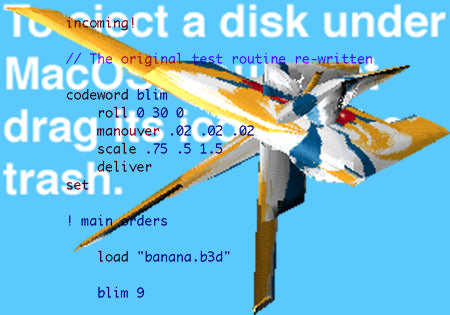 Vendor:1 - to eject a disk under macosRhea Myers
Vendor:1 - to eject a disk under macosRhea Myers
1996
ERC-721 token, digital image
- Regular price
-
$2,200.00 - Regular price
-
- Sale price
-
$2,200.00
-
2 - rm ls -!
 Vendor:2 - rm ls -!Rhea Myers
Vendor:2 - rm ls -!Rhea Myers
1996
ERC-721 token, digital image
- Regular price
-
$2,200.00 - Regular price
-
- Sale price
-
$2,200.00
-
3 - turbine 22, mac disk eject
 Vendor:3 - turbine 22, mac disk ejectRhea Myers
Vendor:3 - turbine 22, mac disk ejectRhea Myers
1996
ERC-721 token, digital image
- Regular price
-
$2,200.00 - Regular price
-
- Sale price
-
$2,200.00
-
4 - winmac video for windows
 Vendor:4 - winmac video for windowsRhea Myers
Vendor:4 - winmac video for windowsRhea Myers
1996
ERC-721 token, digital image
- Regular price
-
$2,200.00 - Regular price
-
- Sale price
-
$2,200.00
-
5 - winmac nt prostitutes
 Vendor:5 - winmac nt prostitutesRhea Myers
Vendor:5 - winmac nt prostitutesRhea Myers
1996
ERC-721 token, digital image
- Regular price
-
$2,200.00 - Regular price
-
- Sale price
-
$2,200.00
-
6 - xerox parc win mac
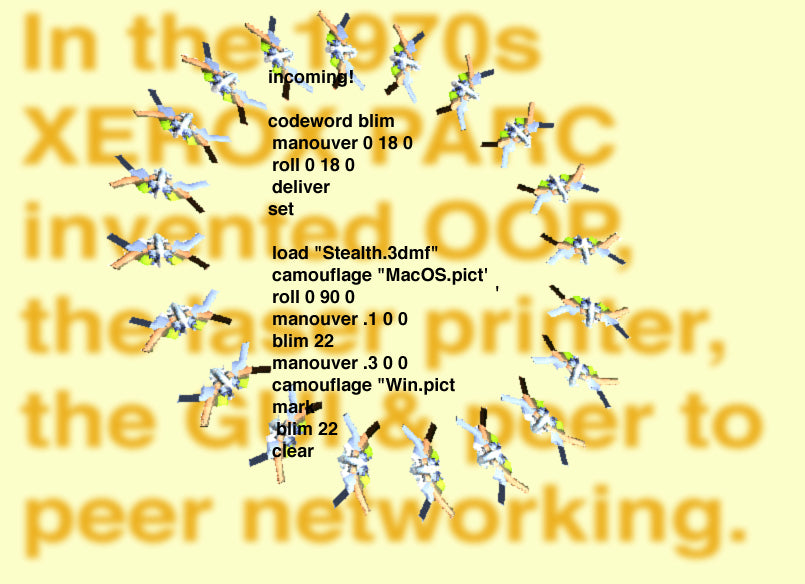 Vendor:6 - xerox parc win macRhea Myers
Vendor:6 - xerox parc win macRhea Myers
1996
ERC-721 token, digital image
- Regular price
-
$2,200.00 - Regular price
-
- Sale price
-
$2,200.00
-
7 - format c mac 6 ring
 Vendor:7 - format c mac 6 ringRhea Myers
Vendor:7 - format c mac 6 ringRhea Myers
1996
ERC-721 token, digital image
- Regular price
-
$2,200.00 - Regular price
-
- Sale price
-
$2,200.00
-
8 - apple corp vs winmac 22
 Vendor:8 - apple corp vs winmac 22Rhea Myers
Vendor:8 - apple corp vs winmac 22Rhea Myers
1996
ERC-721 token, digital image
- Regular price
-
$2,200.00 - Regular price
-
- Sale price
-
$2,200.00
-
9 - open nt ns rose
 Vendor:9 - open nt ns roseRhea Myers
Vendor:9 - open nt ns roseRhea Myers
1996
ERC-721 token, digital image
- Regular price
-
$2,200.00 - Regular price
-
- Sale price
-
$2,200.00
-
10 - win.ns ring kaleida
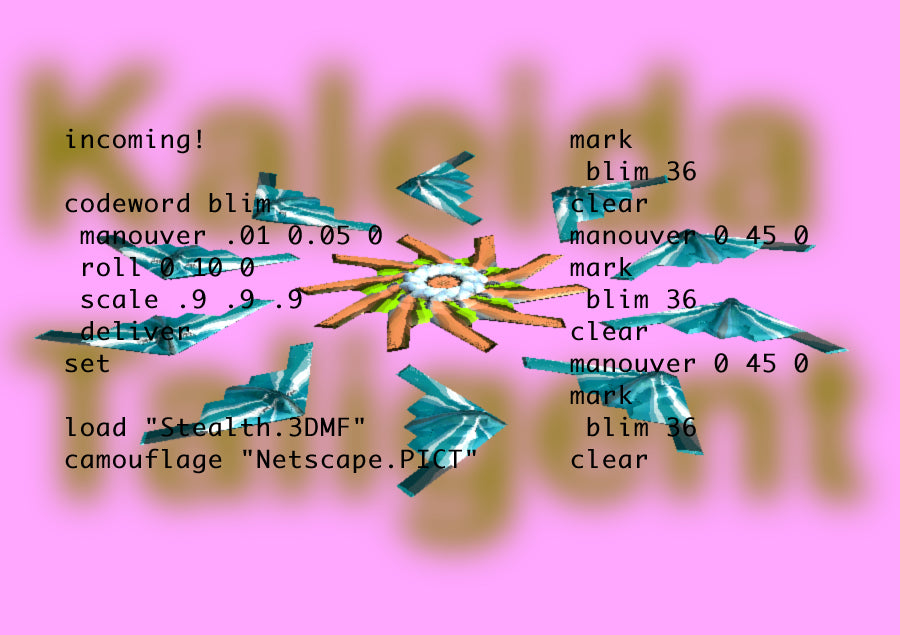 Vendor:10 - win.ns ring kaleidaRhea Myers
Vendor:10 - win.ns ring kaleidaRhea Myers
1996
ERC-721 token, digital image
- Regular price
-
$2,200.00 - Regular price
-
- Sale price
-
$2,200.00
-
11 - ns spirals mac 89
 Vendor:11 - ns spirals mac 89Rhea Myers
Vendor:11 - ns spirals mac 89Rhea Myers
1996
ERC-721 token, digital image
- Regular price
-
$2,200.00 - Regular price
-
- Sale price
-
$2,200.00
-
12 - ns spiral unix flavours
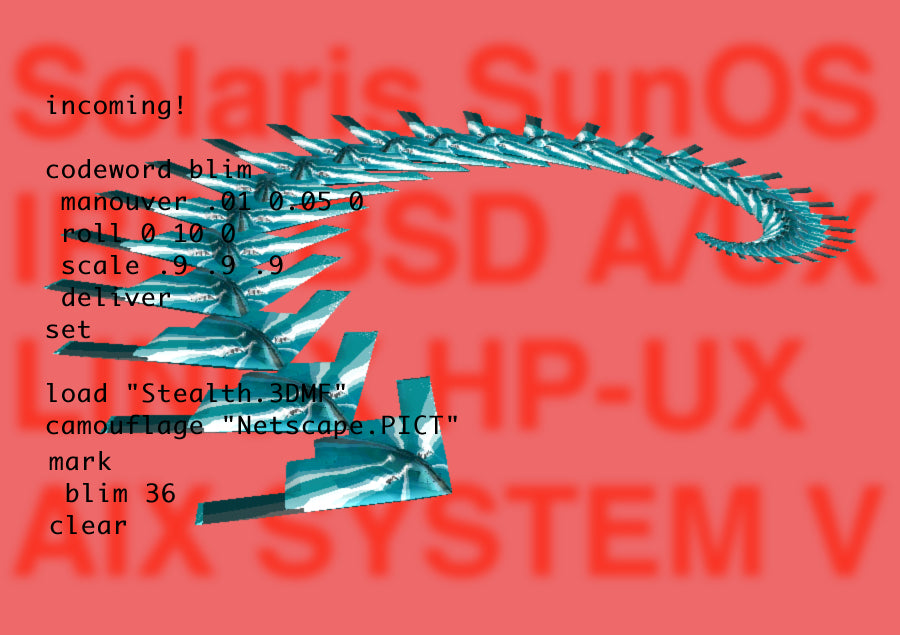 Vendor:12 - ns spiral unix flavoursRhea Myers
Vendor:12 - ns spiral unix flavoursRhea Myers
1996
ERC-721 token, digital image
- Regular price
-
- Sale price
-
$2,000.00
-
draw-something
 Vendor:draw-somethingRhea Myers
Vendor:draw-somethingRhea Myers
Commissionable work of generative output printed on 100% cotton, acid free, smooth paper. Once purchase, somebody from our sales team will get in touch to organise a selection of outputs to be printed.
- Regular price
-
$2,200.00 - Regular price
-
- Sale price
-
$2,200.00
-
draw-something-onchain
 Vendor:draw-something-onchainRhea Myers
Vendor:draw-something-onchainRhea Myers
2023
Generative ERC-721 token, Javascript code
- Regular price
-
- Sale price
-
$300.00
-
First vector based raymarcher output
 Vendor:First vector based raymarcher outputPiter Pasma
Vendor:First vector based raymarcher outputPiter Pasma
2020
Black pen on paper + ERC-721 token
- Regular price
-
$6,500.00 - Regular price
-
- Sale price
-
$6,500.00
-
Schotter 3D
 Vendor:Schotter 3DPiter Pasma
Vendor:Schotter 3DPiter Pasma
2020
Black pen on paper + ERC-721 token
- Regular price
-
- Sale price
-
$6,500.00
-
Dance to forgotten noise
 Vendor:Dance to forgotten noiseMonica Rizzolli
Vendor:Dance to forgotten noiseMonica Rizzolli
2023
Custom software (colour, silent), generative, interactive JavaScript (p5.js), HTML & CSS
- Regular price
-
$70,000.00 - Regular price
-
- Sale price
-
$70,000.00
-
Cosmic Rays #887
 Vendor:Cosmic Rays #887Melissa Wiederrecht
Vendor:Cosmic Rays #887Melissa Wiederrecht
2023
Algorithmic Generative Art, Javascript code with p5.js and GLSL accompanied by a physical print
- Regular price
-
$7,700.00 - Regular price
-
- Sale price
-
$7,700.00
-
VDU Transformation Series No. 11
 Vendor:VDU Transformation Series No. 11Stephen Willats
Vendor:VDU Transformation Series No. 11Stephen Willats
1993
Poster paint, pencil, Letraset text on paper
- Regular price
-
$41,000.00 - Regular price
-
- Sale price
-
$41,000.00
-
Unit Drawing No 1
 Vendor:Unit Drawing No 1Stephen Willats
Vendor:Unit Drawing No 1Stephen Willats
1965
Gouache, pencil on paper
- Regular price
-
$32,000.00 - Regular price
-
- Sale price
-
$32,000.00
-
Change Exercise No 13
 Vendor:Change Exercise No 13Stephen Willats
Vendor:Change Exercise No 13Stephen Willats
1965
Gouache, pencil on paper
- Regular price
-
$33,000.00 - Regular price
-
- Sale price
-
$33,000.00
About GEN/GEN: Generative Generations
About the Artists
Loren Bednar
Fusing mathematics with a distinct sensitivity to colour and shape, Loren Bednar creates abstract artworks imbued with emotive undercurrents. Focusing on the interaction of colourful patterns and motion, Bednar prioritises experimentation and technical performance throughout his practice of locating art within algorithms.
Based in the United States, Bednar has been producing generative artwork since 2006 and is a curated artist on the Art Blocks platform. He has exhibited in: The Digital Roots, LUME Studios, New York City; Refraction Festival, ZeroSpace, New York City; Immutable, Vellum, Los Angeles; The Berlin Collection, Bright Moments, Berlin; Unblock Gaudi: Digital Art via Blockchain, Museum Angewandte Kunst, Frankfurt; Art Blocks x Samsung, Samsung 873, New York City; and Building Blocks, a group show by Unit London.
Darien Brito
Audio-visual artist and creative coder, Darien Brito's practice spans computer graphics, sound art, generative art, and complex systems. Taking an autodidactic approach, Brito taught himself various programming languages to create art conducted by algorithmic processes. As a composer, the artist has produced works ranging solo instrument pieces to chamber music, orchestra, electronics, and music for theatre, film, opera, and contemporary dance. Brito works as developer and consultant for his peers, often collaborating to produce multidisciplinary technological works. Currently, the artist is focused on creating generative art, live performances, and installations using electronics, real-time computer graphics and light. Based in The Hague, The Netherlands, Brito hails from Quito, Ecuador, and holds a BA from the Royal Conservatory of The Hague in music composition and an MA from the Institute of Sonology. The artist has shown work at venues, festivals and exhibitions around the world, including Espacio Fundación Telefónica, Perú, Zentrum für Kunst und Medien (ZKM), Germany; Today's Art Festival, Netherlands; Cryptic Nights, London; Sónar Festival, Spain; Société des Arts Electroniques (SAT), Canada; Mutek Festival, Canada; Artblocks Curated, Online; and the Venice Biennale, Italy.
Sougwen Chung
Multidisciplinary artist Sougwen 愫君 Chung combines hand-drawn and computer-generated marks to address the proximity of human-machine collaboration. Their speculative critical practice spans installation, sculpture, still image, drawing, and performance, exploring the mark-made-by-hand and the mark-made-by-machine as an approach to understanding the dynamics of humans and systems. Chinese-Canadian Chung is a former researcher at MIT Media Lab, Artist in Residence at Bell Labs and New Museum of Contemporary Art in New York, and founder and artistic director of Scilicet, a London-based studio exploring human & non-human collaboration. Chung received the Lumen Prize for Art in Technology, and the work has been collected by institutions such as the Victoria & Albert Museum. The artist has been featured in numerous exhibitions at museums and galleries around the world such as: the Espoo Museum of Modern Art, Espoo; Vancouver Art Gallery, Vancouver; Art Basel, Miami; National Art Center, Tokyo; NTT InterCommunication Center [ICC], Tokyo, Japan; ArtScience Museum, Singapore; MIT Media Lab, Cambridge; The Drawing Center, New York; The New Museum, New York; Museum of Contemporary Art, Geneva; Mana Contemporary, New York, Tribeca Film Festival, New York; The Hospital Club, London; Mutek Festival, Tokyo, Montreal & Mexico City; Sonar Festival, Barcelona.
Harold Cohen
Harold Cohen was a British artist whose innovations at the forefront of technology changed the face of computer art. Unfolding where art and artificial intelligence intersect, Cohen's artistic practice was punctuated by his famed invention of AARON, a computer programme designed to create art independently. Cohen's work attracted global attention and was exhibited at major institutions such as Tate London and SFMOMA.
Having graduated from Slade School of Fine Art, Cohen's first solo exhibition was held at Ashmolean Museum, Oxford in 1951. Further solo shows followed, including at Whitechapel Gallery in 1965. Cohen represented the UK at the 1966 Venice Biennale, Documenta III, the Paris Biennale, and the Carnegie International.
Cohen relocated to the United States as a visiting lecturer at the University of California, San Diego, in 1968. Cohen remained at UC San Diego (UCSD) for almost three decades, as professor, chairman of the Visual Arts Department and eventually in 1992, director of the Centre for Research in Computing and the Arts. During this time Cohen began work on AARON, a venture to which he would devote the next five decades, instigating new areas of study and pioneering generative art.
After his retirement from UCSD, he continued to work on AARON and produce new artwork in his studio in Encinitas, California. In 2014, Cohen received the ACM SIGGRAPH Distinguished Artist Award for Lifetime Achievement in Digital Art.
Brendan Dawes
Brendan Dawes (B. 1966) uses generative processes involving data, machine learning, and code to create interactive installations, electronic objects, online experiences, data visualisations, motion graphics, and physical sculptures. Dawes draws much of his inspiration from popular culture and nature, often revolving his work around concepts of time and memory. These analytical explorations interrogate our understanding of the surrounding world.
An Alumni of the Lumen Prize and Aesthetica Art Prize, Dawes’ work has been featured in exhibitions worldwide, including Big Bang Data in thirteen cities, and three shows at MoMA, New York; the latter acquiring artwork Cinema Redux for their permanent collection. Following his Genesis NFT on KnownOrigin selling within the hour to legendary collector WhaleShark, Dawes released a collection on Nifty Gateway – selling out in under sixty seconds. He has also released work on MakersPlace, Foundation and SuperRare. His work has been auctioned at Sotheby’s Natively Digital: A Curated NFT Sale and Generative Art and The Future, an art exhibition in Shenzhen hosted by China’s largest auction house, Beijing Poly International Auction.
Ernest Edmonds
A pioneer in the development of computational art, Ernest Edmonds' work represents a prominent milestone in the fields of generative and interactive art. Underpinned by Concrete, Constructivist, and colour field artistic traditions, a focus on structures and interactions are vital to Edmonds' practice. Specialising in creative computing, the artist's research into human perception has shaped elementary computer-generated forms in arresting colours. Born in London, Edmonds studied Mathematics and Philosophy, and garnered a PhD in Logic. In his art-making Edmonds moved from oils and acrylics to his first use of a computer in 1968, going on to show his first computer-based interactive work with Stroud Cornock in 1970, his first networked piece in 1971, and his first generative time-based video, Fragment in 1985. In 2017, Edmonds was awarded the ACM SIGGRAPH Distinguished Artist Award for Lifetime Achievement in Digital Art. He has exhibited across the world, from Moscow to London, Berlin, Washington DC, Rotterdam, Beijing and Sydney. In Rio de Janeiro, 2015, he exhibited with other pioneers, Harold Cohen, Frieder Nake and Paul Brown and in Venice, 2017, he was part of another major exhibition of pioneer computer artists with Manfred Mohr, Vera Molnar, Frieder Nake and Roman Verotkso. Edmonds' retrospective exhibitions include ones at Microsoft Research Asia, Beijing, De Montfort University, Leicester and Mosman Art Gallery, Sydney. He has written many publications on computer art, human-computer interaction, and creativity.
Licia He
As a generative artist and human-computer interaction researcher, Shiqing (Licia) He employs an expressive visual language alongside technological innovations to communicate emotion and experiences. Fascinated by the potentialities of human-machine collaboration, the artist connects her physical and digital practice by materializing code-based generative art with robots. Licia He grew up in China and currently resides in London, UK. Her cross-disciplinary artworks often use multicultural experiences as inspirations. She holds a Bachelor of Science degree in Studio Art and Computer Science, and a PhD in Information Science. Focused on the connections between art and technology throughout her doctoral study at the University of Michigan, School of Information (Michigan, United States), Dr. He researched and published in areas like data visualization, human-machine interaction, and creativity support tools. Around 2018, Licia He ventured into the world of generative art to connect her passion for visual art and programming. She previously served as an assistant professor at Texas A&M University, School of Performance, Visualization, and Fine Art (Texas, United States), where she founded the Generative Craft Lab.
Tyler Hobbs
Tyler Hobbs is a visual artist working with algorithms, plotters, and paint. Focusing on computational aesthetics, and how they are shaped by the biases of modern computer hardware and software, Hobbs explores how they relate to and interact with the natural world around us. Undertaking a generative approach to art making, the artist's work examines the possibilities of creation at scale and the potentials of emergence.
Hobbs' most renowned project, Fidenza, is a series of 999 algorithmically generated works comprising one of the most sought-after fine art ERC-721 token collections. His drawings, paintings, and digital works have been privately collected around the world. Hobbs has presented four solo exhibitions of work: QQL: Analogs (2023), Pace Gallery, Manhattan, New York; Mechanical Hand (2023), Unit, London, UK; Incomplete Control (2021), Bright Moments Gallery, Manhattan, New York; Progress (2018), Galería Dos Topos, León, Mexico. Additionally, his work was included in Christie’s auctions in 2021 and 2023, and a Sotheby’s auction in 2022 and 2023. Hobbs holds a BS in Computer Science from the University of Texas at Austin.
Ben Kovach
Creating emergent, generative artwork with an organic sensibility, Ben Kovach engages randomness, code, and mathematical principles in his artmaking. Kovach emulates established materials such as pen, pencil, paint, and charcoal in his digital works, which suggest tangibility, presence, and a kind of playfulness. Having turned to generative art in 2017, Kovach's notable projects include the release of Edifice, a 976-strong collection of artworks for Art Blocks Curated, and 100 PRINT, a series culminating in a solo show in collaboration with Bright Moments in New York. Kovach has been internationally exhibited in Los Angeles, Tokyo, New York, Bologna, Venice, and London.
William Latham
William Latham is well known as an early pioneer of Generative Art through his Mutator Evolutionary Art created at IBM in the late eighties and early nineties. His work, which shows strange organic, often serpentine, forms, is produced using his “alternative evolutionary software system” (developed with Stephen Todd and team), which William uses to pick and breed 3D forms freed from the limits of the human imagination. His work was widely shown in museums and touring shows in UK, Germany, Australia and Japan at that time. William’s work is focussed on using evolutionary processes to create art centered on the idea of “Artist as Gardener,” an idea which originated from his time as Henry Moore Scholar at the Royal College of Art in the early eighties where he created his FormSynth drawings and etchings which were to become a blueprint for his later Mutator work. On leaving IBM in the mid-nineties he set up a studio in Soho and moved into working in Rave Music where his organic art had build up a big following in the emerging Rave and Cyberculture scene. After three years he and his team of around 70 people then moved into developing games working with Warner Bros and Universal Studios, in 2002 they created the hit game “The Thing” based on The John Carpenter movie which used his organic style. In 2007 he moved away from entertainment and become a Professor in Computer Art at Goldsmiths where he restarted his creative collaboration with IBM mathematician and programmer Stephen Todd.
They resurrected and extended their old Mutator code and pushed the technology into VR creating highly novel organic immersive experiences for the public. The VR work has been shown in many touring exhibitions in China, Japan, Peru, Belgium and UK. Mutator VR uses his core evolutionary ideas but also shows strong influence from Rave and interactivity from games. Recently he has worked on his Fantasy Virus Mutator series and more recently again has been working in B+W on his Infinity Mirror series of images that can be described as “Computer Gothic”, influenced by Durer’s engravings on the one hand and electron microscopy on the other. William’s work is in the permanent art collections of The Pompidou Centre Paris, The V&A, The Gulbenkian Foundation and The Henry Moore Institute.
Rhea Myers
Rhea Myers is an artist, hacker, and writer. She skillfully intertwines technology and culture, prompting them to question and interact with each other. The driving force behind Myers' artistic endeavors is her desire to comprehend the world that surrounds her. Since 2014, her focus has been on producing art centered around the concept of the blockchain. As a medium, the blockchain serves both as a reflection of and an alternative to the societal landscape following the financial crisis of 2008. Myers views the blockchain as a subject that resonates uniquely, embodying the centuries-old cryptographic imagery deeply rooted in Western political thought. Myers' exploration of the blockchain as a subject for artmaking began with the creation of raw transactions, simulating intangible forms. Over time, her artistic journey led her to delve into crafting smart contracts and subsequently ERC-721 tokens. These ERC-721 tokens, in particular, create forms of property and control infused with a sense of irony. Throughout this artistic evolution, Myers' focus shifted increasingly towards the emotions tied to ownership anxiety that the concept of blockchain property evokes.
From the UK and currently residing in British Columbia, Canada, Myers has exhibited internationally at venues including: ArtScience Museum, Singapore; Kunsthalle, Zürich; Sotheby’s, London; Chronus Art Centre, Shanghai; CADAF, New York; Jerwood Visual Arts, London.
Piter Pasma
Inspired by the possibility of math and code, Piter Pasma’s background in the competitive demoscene of the late 1990s honed his expertise in writing algorithms in their most efficient form. He is known for using mathematical functions to describe three-dimensional generative scenes, executed using his "rayhatcher" algorithm, which creates plottable line art, and uses a minimal amount of code. Pasma enjoys encouraging others to create by organizing Genuary, an annual event where artists create daily pieces according to 31 carefully selected prompts. Pasma is based in Groningen, the Netherlands, and has won multiple prizes for his real-time audiovisual artworks contained under 4 kilobytes.
Monica Rizzolli
Monica Rizzolli is a self-taught coder who uses an ecological approach to art-making, viewing humans, art, and code as components of nature. Via botanical motifs, Rizzolli creates collections of unique works that stem from a single code. Rizzolli was drawn to generative art for the mediums' conceptual potential to represent all manner of possible scenarios. Rizzolli began as a painter, and began studying creative programming while at Kunsthochschule Kassel, Germany. The artist presented her first generative work in 2015, at MAK Center for Art and Architecture funded by the MAK-Schindler research grant. In Brazil, the artist co-created the creative programming meeting, Noite de Processing, at Garoa Hacker Clube and was involved in organising the Processing Community Day Brazil. In design, Rizzolli has developed generative magazine covers, fabric designs, and typefaces with Tony de Marco, including Tomorrow for Google Fonts. In 2021 she launched the Fragments of an Infinite Field series on the Art Blocks platform, which solidified her position in the generative art field.
Melissa Wiederrecht
Melissa Wiederrecht uses code as medium to survey various paradoxes: order and chaos, intention and accident, light and darkness, and control and randomness. Inspired by pioneers in the field of generative art, alongside Western and Islamic art history, Wiederrecht harnesses modern technology and tools like Javascript and GLSL fragment shaders, and the blockchain, to create artworks that explore ancient themes and cultural concepts.
Born in Iowa, Wiederrecht studied Computer Science and Mathematics at the University of Wyoming, and is based in Mecca, Saudi Arabia. The artist has released digital artworks on the blockchain since 2022, including: Sudfah, Art Blocks Curated (2022); Cosmic Rays, Verse (2023); Undercurrents, Bright Moments (2023); Take Wing, fxhash (2022); and Zbageti, fxhash (2022). Wiederrecht’s work has been shown worldwide, including: N=12, Feral File (2023); Tandem, Galerie Data, Paris (2023); Generative, FakeWhale Cross (2023); Liminal Space, Unit London, London (2023); Odysseys, Verse (2023); FEMGEN, Right Click Save x Vertical Crypto Art (2022); In Touch, VerticalCrypto Art, Berlin (2022); Arithmetic Phenomena, Verse (2022); and Coded Elegance, 1stDibs (2022). Her work is held in private and institutional collections such as Le Random, 6529 Museum of Art, Curated.xyz, and Unicorn DAO.
Stephen Willats
Stephen Willats is a pioneer of conceptual art, who since the early 1960s has created work concerned with extending the terrain in which art operates. Concerned with interdisciplinary processes and theory from sociology, systems analysis, cybernetics, semiotics, and philosophy, Willats has made significant contributions to the fields of contemporary art and social engagement. Consistently challenging traditional notions of art by exploring the intersections of human interaction, technology, and communication, early works such as Meta Filter (1973-75) used everyday objects to examine the dynamics of social relationships and urban environments. In addition to his art practice, Willats has been a prolific writer, publishing numerous essays and books that delve into the theoretical underpinnings of his work. Born 1943, London, Willats stood as a key figure in British Concept Art during the 1960s and 1970s.
Recent exhibitions include: Coded: Art Enters the Computer Age, 1952 - 1982 Los Angeles County Museum (2023); Social Resource Project for Tennis Clubs, Bonington Gallery (2022); Languages of Dissent, Migros Museum (2019); Human Right, MIMA (2017); THISWAY, Index Foundation (2016); Man from the 21st Century, Museo Tamayo (2014-2015); Control: Work 1962-69, Raven Row (2014); Conscious Unconscious In and Out the Reality Check, Modern Art Oxford (2013); Surfing with the Attractor, South London Gallery (2012); The Logic of Association, MoMA PS1 (2011); The Strange Attractor, Gallery Reena Spaulings (2011); COUNTERCONSCIOUSNESS, Badischer Kunstverein (2010); Assumptions and Presumptions, Art on the Underground (2007); Protest And Survive, Whitechapel Art Gallery (2000); Changing Everything, South London Art Gallery (1998); Meta Filter and Related Works, Tate Gallery (1982); Concerning Our Present Way of Living, Whitechapel Art Gallery (1979); Kunst Licht Kunst, Stedelijk van Abbemuseum, Eindhoven (1966). In 1965, Willats founded Control magazine, which is still active today.


















